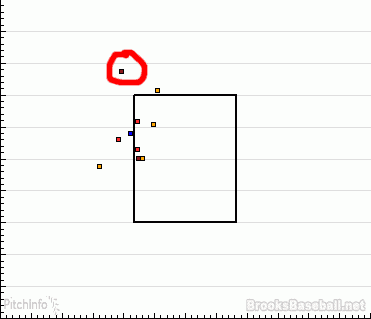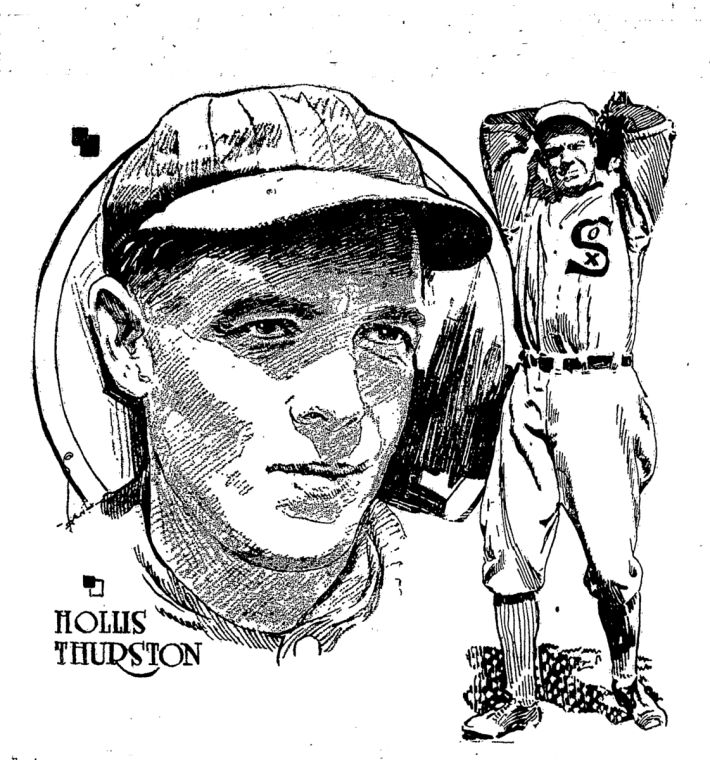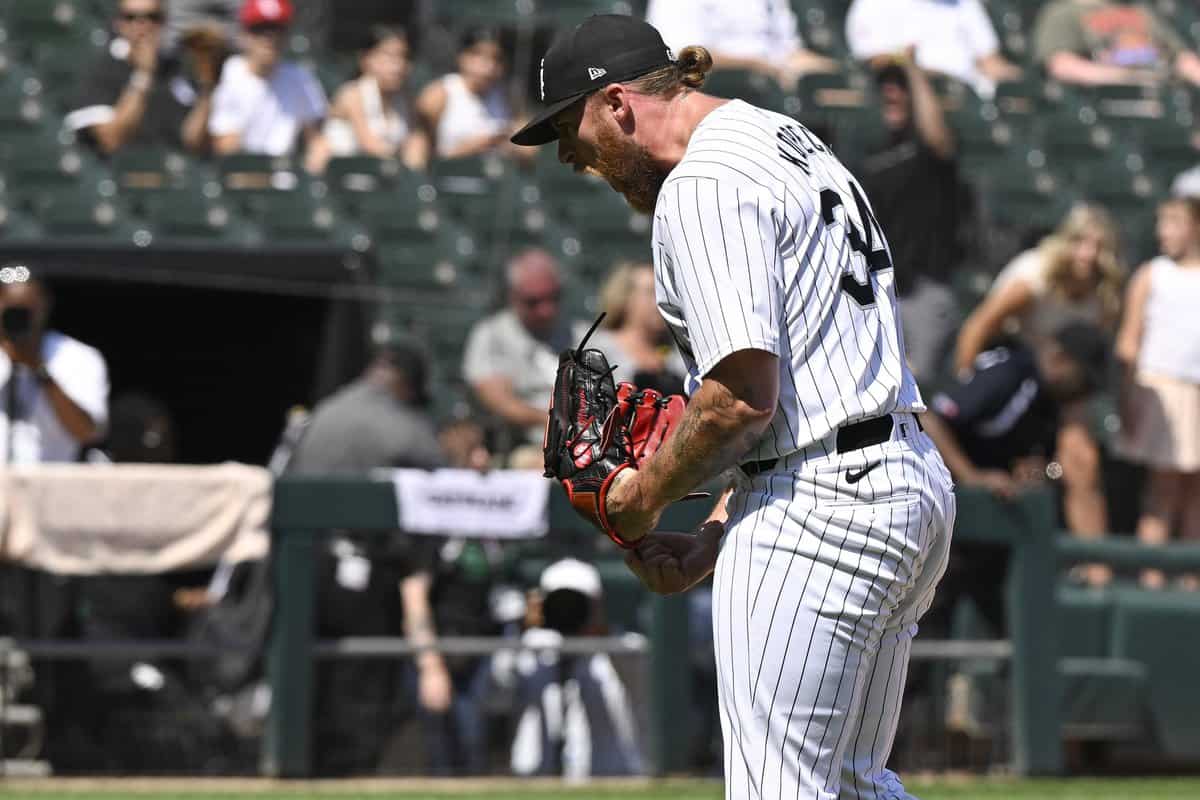When did you first become aware of Sloppy Thurston?
Perhaps it wasn't until Wednesday afternoon, when Michael Kopech matched his feat by striking out the side on nine pitches to close out the White Sox's 3-1 victory over Minnesota for the second immaculate inning in White Sox history. Perhaps Ted worked him into the occasional Sporcle Saturday here at Sox Machine, because his 20-win season in 1924 qualified him for some notable pitcher lists, and his 5.95 ERA over 183 innings the following year qualified him for some worst-ofs.
For me, I can specifically recall first learning about Thurston -- at least in any measurable detail -- on April 5, 2010, because that's when Matt Thornton almost joined him in immortality.
It was Opening Day against Cleveland at U.S. Cellular Field, and while you may remember it for some dinky play Mark Buehrle made ...
... I also remember how the game ended. Thornton took over in the ninth inning with the White Sox leading 6-0, and as was so often the case, Ozzie Guillen called for him to face Cleveland's trio of tough lefties, Grady Sizemore, Shin-Soo Choo and Travis Hafner.
He struck out Sizemore on three pitches, all fastballs. He struck out Choo on three pitches, all fastballs. He got ahead of Hafner 0-2, and then threw a third fastball that should've ended it on any swing, as it was out of the zone up and off the plate. But Hafner was so prepared to cover elevated easy heat that he somehow chopped this pitch foul into the ground:

Thornton had to settle for finishing the game on 10 pitches after Alex Rios robbed Hafner with a diving catch to end the game.
That's when I found out about Thurston, and that's when I started paying attention to any inning where a White Sox pitcher struck out the first two batters on six pitches, because it seldom even gets that close. I always expected Chris Sale to do it -- and he validated my scouting report by recording three of them with the Red Sox -- but James McCann spoiled his best bid during his White Sox years with an 0-2 single in 2015.
What ties together Thurston, Thornton and Sale is excellent control. Thurston's name surfaced for me again in 2012 because José Quintana challenged him for the best control by any White Sox pitcher in his debut season, while Sale owns the second-best strikeout-to-walk ratio in baseball history. Thornton's strike-throwing ability was ordinary by comparison, but when he only needed a fastball, nobody made innings look simpler.
That's what makes Kopech such a bizarre heir to Thurston's throne. He came into Wednesday's doubleheader with nine walks and two HBPs over 14⅔ innings since the start of June, but that somehow understates his problems finding the zone. The more reflective stat was a fastball rate approaching 90 percent because he fell behind hitters so frequently that he couldn't bring himself to try his cutter or slider, which were somehow less trustworthy.
It culminated in a disastrous walk-off loss to the Marlins, which ended when Jake Burger took him deep on a decent fastball because Burger had no reason to expect anything else. If that's what shook some sense into Kopech, it might've been worth it.
A day later, Kopech took the mound in the 10th inning and stranded the Manfred Man on 10 pitches, only six of which were fastballs. Two days after that, Kopech recorded the first immaculate inning for the White Sox in more than 100 years, and a generous application of his cutter made it possible. It accounted for four of his nine pitches, and while it also accounted for his only hanger, it just looks like another strike in the game log.
Nobody would've said they saw this coming at any point this season, but if you narrow the time frame, Kopech said he could feel the possibility before it was halfway through.
“I was telling guys in there, I’m trying not to lie about it, I was thinking about it from Pitch 4," Kopech said. "As soon as I realized there were no balls on the board, I wanted to finish that feat off. It feels good, but at the same time, I would have never thought about it again if I threw a ball in there at some point. Just glad to have a clean inning and get the win."
The White Sox went on to lose the back end of a doubleheader in a more characteristic fashion, as the offense could only generate two runs and thus couldn't absorb a hard-luck inning for Michael Soroka. Soroka, who already owned the franchise record for the most losing decisions to open a season, fell to 0-10. That's more typical of the kind of history the White Sox can be expected to make over the final 2½ months of the season, so you have to savor the pleasant surprises, even if they look like one of baseball's great aberrations.
Speaking of which...

About Sloppy Thurston
Hollis Thurston -- who was ironically nicknamed "Sloppy" by teammates because he was a natty dresser in the Roaring Twenties -- joined the White Sox in 1923 after they purchased him from the St. Louis Browns. The change of scenery benefited him, as he staked his claim to a spot in the White Sox rotation to start a nine-year MLB career. He peaked in 1924, when he went 20-14 with a 3.80 ERA over 291 innings, leading the league with 28 complete games. Arm problems set in soon after, but he ended up reviving his career for four seasons with the Brooklyn Dodgers, and had a successful career as a scout after he retired.
When he threw his immaculate inning in the 12th inning against the Philadelphia Athletics on Aug. 22, 1923, he didn't to celebrate it the way Kopech did, because it merely sent the game to the bottom of the frame. When the Sox failed to score, he returned to the mound and gave up a run on a pair of one-out singles sandwiching a stolen base. The White Sox had no answer for Eddie Rommel's knuckleball, even after 13 innings' worth of looks at it.
Still, Thurston's feat was immediately recognized. The Chicago Tribune's summary from the next day:
After the tenth, [starter Ted] Blankenship was no more, Hollis Thurston taking up the task and, despite his beating, providing a feat that occurs only once in a blue moon. The ex-Coast leaguer performed only three rounds, but during that time fanned six men, getting three of them -- McGowan, Galloway, and Hale -- in a row in the twelfth on nine strikes, none of which were even fouled. Each of those nine pitches was a "screw ball."
The screwball -- which was also called a "fadeaway" back then -- was Thurston's weapon of choice. He didn't have much in the way of power, which explains why he never struck out more than 55 batters in a season. The Neyer/James Guide to Pitchers cites a Baseball Magazine article from October 1924:
"My favorite ball is a kind of fade-away that breaks away from a left-handed batter. It's a slow ball and I use a lot of them. Perhaps out of a hundred pitched balls, I'll use as many as twenty-five slow balls . . . I have only a fair fast ball, but a fast ball, even without much hop on it, will get you by if you have perfect control."
Beyond the control, Thurston could say he was actually a very good hitter for a pitcher, owning a .270/.299/.383 line over 699 plate appearances with the Browns, White Sox, Senators and Dodgers. In fact, after striking out the side in the top of the 12th on the minimum number of pitchers that fateful day on Aug. 22, 1923, he batted for himself in the bottom of the inning, and he drew a walk.






